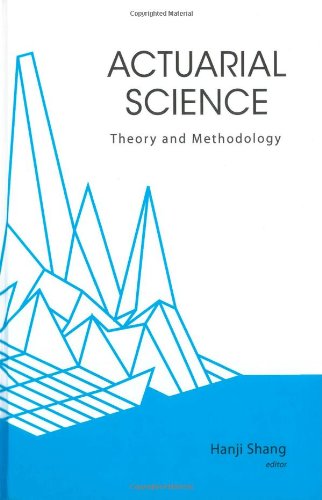Actuarial Science: Theory and Methodology pdf free
Par forrester joseph le mardi, septembre 6 2016, 21:47 - Lien permanent
Actuarial Science: Theory and Methodology. Hanji Shang

Actuarial.Science.Theory.and.Methodology.pdf
ISBN: 7040192322,9787040192322 | 282 pages | 8 Mb

Actuarial Science: Theory and Methodology Hanji Shang
Publisher:
But after a year of trying different things, he realized that the Bayesian actuarial methods worked better than frequentist methods. This originated with problems in gambling, but soon spread to serious applications in all the social sciences including politics (for some modern ramifications see also cost-benefit analysis; decision theory). Actuarial Science covers subjects on applied mathematics, statistics and financial theory. The complete syllabus of the course is instruction in forecasting theory, quantitative and non-quantitative risk dimension methodologies, Expansion of risk tables, secondary data analysis, and computer-assisted research methods. The definition of a scientific theory runs something like this: “A set of statements or principles used to explain a group of facts or phenomena, especially one that has been repeatedly tested or is widely accepted and can be used to make predictions about natural phenomena.” Ask someone . She is a reproductive epidemiologist interested in an array of methodology and theoretical approaches to improve maternal health and neonatal outcomes globally. Actuarial Mathematics;"Newton L.; Hickman, James C.; Nesbitt, Cecil J.; Gerber, Hans U; Jones, Donald A. Although Bayes' rule drew the attention of the greatest statisticians of the twentieth century, some of them vilified both the method and its adherents, crushed it, and declared it dead. His most famous argument in probability is . He published the monumental Theory of Probability in 1939, which remained for many years the only explanation of how to use Bayes to do science. He invented the first practicable calculating machine, in 1642, while his experimental and mathematical work on the barometer affords a model of mid-17th-century science and methodology. The skills of an Actuaries just matched their requirements. Students in actuarial science and risk management degree programs take also take courses in international business, mathematics, financial engineering, loss models, and investment banking.